The interesting thing about mobile home steps and stairs is that nearly every manufactured home has them. Some are constructed of aluminum, while some are built of stone, concrete, fiberglass, or plastic. The term “mobile home steps” or “mobile home stairs” gets used quite a bit and can often have a broad definition to include smaller porches or landing platforms. It is likely that the entry steps on your mobile home will not last as long as your home and will need repair or replacement. The following information was created with that in mind. When you go to make your decision on how best to build, replace, repair, buy, or install steps for mobile homes, this should be your guide! Getting access to your mobile home reliably and safely is perhaps the most important function of the steps that lead up to your entry door. Getting access to your mobile home reliably and safely is perhaps the most important function of the steps that lead up to your entry door.
Difference Between Mobile Home Steps and Mobile Home Stairs?
Though these two terms often get used to describe the same thing, there is actually a technical difference between them. The term “steps” is used when 3 or fewer risers are used. While the term “stairs” is used when 4 or more risers are used. So, to remember this, keep in mind that generally, it is a small set of STEPS and a large set of STAIRS. But, for a more useful understanding of the differences, you will need to learn the definition of the term “riser” in the context of stairs and steps engineering. Regardless of the location, such as side entrance, front entrance, or back entrance, the definition is the same.
Components of Mobile Home Stairs and Steps
As with most projects, understanding the terminology for the components, tools, and installation will always put you in a better position to save money, make the right decision, and ensure you get the job done right. This information will also help as you read through the rest of this guide as we will often refer to these components.
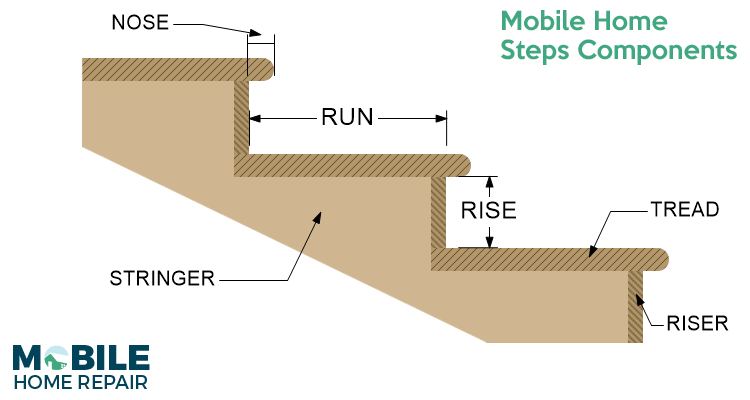
- Rise – The rise is the vertical distance between each step. Your riser height is often mandated by local code rules, so be sure to check it before committing to a set of mobile home steps.
- Riser – While the rise is the distance in vertical height, the riser is the building material that spans that distance whether it be wood, plastic, concrete, or another building material.
- Run – The run is the horizontal distance or depth of each step. The run is measured from the outside of the riser to the outside of the previous riser. Like the riser, this dimension is likely mandated by local code rules.
- Tread – The tread is the building material that spans the horizontal distance of the step. In other words, it’s the part you step on. Yes, we wish it was called a runner as well to make things simple but such is life! The length, width, and height of the tread are also subject to code rules.
- Slope – The slope is the angle of the diagonal rise of the stairs. It is generally measured in degrees and most steps and stairs will have a 30-40 degree slope. If you have ever climbed a set of “steep” stairs then you have experienced what a high slope can mean for use and safety. This is also often set by local codes.
- Nose – The nose is the part of the tread that hangs over past the riser. Local codes will generally require that this distance be 1 inch or less.
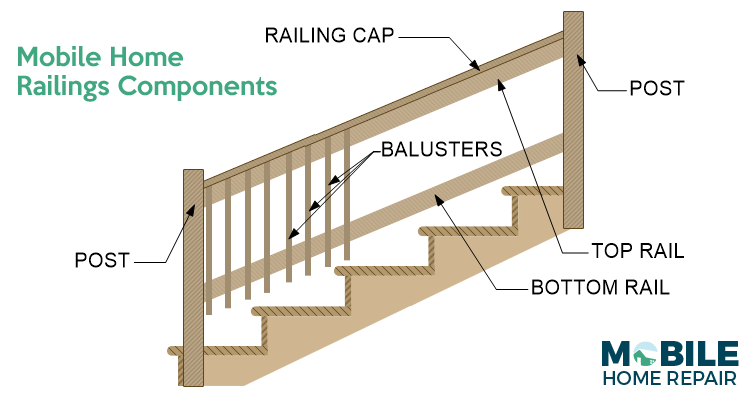
- Post – The upright rigid post material that is the structural basis for the railing system on the mobile home stairs. They are usually at the top and bottom of the stairs at a minimum whenever there are 4 or more steps. For enhanced support and in accordance with code requirements, it could be essential to place extra posts between the top and bottom of larger stairs.
- Top Rail and Bottom Rail – These two pieces extend in between the posts and are used to hold the balusters in place. The height of the top rail, the distance the bottom rail is from the tread, and the overall distance between the bottom and top rail are all held to strict standards via local codes.
- Balusters – These are the components of mobile home steps that align vertically along the rails. Local code will require that they not be more than 4-6” apart in most cases.
- Railing Cap – The cap is placed along the top of the top rail. It is not a requirement necessarily, but it is used to offer a more finished look. Some local codes may require it depending on the building material used.
Fiberglass Steps, Wooden Steps, Metal Steps, Concrete Steps, and Plastic: Which is Best?
With modern manufacturing processes, there are all kinds of materials used in the fabrication of mobile home steps and stairs. The materials used are in most cases the same materials used with site-built homes and also with RVs.
Wood
It will probably not surprise you that wood is the most popular building material for creating mobile home steps, stairs, porches, and more. It is easy to find, relatively inexpensive, and simple to work with. Not just any old wood will do. Choosing the wrong wood could leave you with problems with stability, rot, and pests. As with any type of building project that will need to deal with mother nature, it is important to consider a wood that is durable, waterproof (or can be waterproofed), easy to stain/paint and that isn’t overly heavy if it is important that your finished project be easy to move.
The most used wood types are:
- Pressure Treated – there are many types of pressure treated but the most common is made from pine. It is inexpensive, easy to find, and easy to work with. It must be cleaned and sealed over time to keep it in good condition. This wood is created by infusing the wood with preservatives in a pressure chamber, hence the name.
- Cedar – moisture-resistant, rot-resistant, and insect resistant. It offers significant durability vs other types of wood. Cedar actually changes its moisture content to match its environment which keeps it from warping or cracking.
- Redwood – easy to work with, it naturally resists decay and insects, and warp resistant. It also is a low-maintenance wood that can be left to weather on its own. It also retains finishes well.
- Composite – not really wood exactly. Composite is a wood-polymer hybrid. It is a mixture of wood fibers and plastic fibers that are considered to be environmentally friendly. It is a very popular material that offers long life, and stain resistance, is lightweight, and it won’t rot or split.
Concrete
What do your sidewalks and your mobile home steps have in common? If they are both made of concrete then they can last 100 years and are easy to care for, but nearly impossible to move. Concrete steps are a popular choice due to the durability of concrete, the low cost, and non-existent maintenance. Concrete unfortunately weighs a lot. It takes some extra preparation for the underlying ground before you can safely install concrete steps. They also tend to have problems with stability as the foundation settles. Also, moving them is a challenge that will require help or machinery.
Plastic
Plastic components for stairs and decks have become more popular in the last decade. They are extremely durable against mother nature. They will not stain and it tends to be lightweight. They are commonly made from PVC and/or polyethylene. However plastic materials for mobile home steps can have issues with looking cheap, being slippery when wet, and often sagging more than their wood counterpart. It is not uncommon to see a mix of wood and plastic on stairs. The wood often will make up the stringers while the treads and risers are made of plastic. Makes for a lightweight and durable match.
Fiberglass
Fiberglass is a favorite material for RVs, boats, and other lightweight and durable applications. Fiberglass is relatively lightweight, lasts a long time, is mother nature resistant, and it is relatively affordable compared to the maintenance of wood. Stairs made of fiberglass generally have a wooden framed substructure and will have fiberglass formed around the wood skeleton. There are numerous options with fiberglass and the most notable thing is that they can be very expensive to ship due to their size.
Metal
Metal steps are another popular option with manufactured homes. Due to the rigidity of metal, it takes a lot less of it to equal the strength of other building materials. Metal steps are often easy to move, take apart, and relocate which makes them a favorite for RV owners. Metal will last a very long time with proper care with its biggest drawback being the potential for rust. Metal is affordable and practical for many applications. You can find mobile home steps made from steel and aluminum. Aluminum tends to be the more expensive option.
Popular Mechanics has a great read on the different types of decking material if you require more information.
Wood vs. Metal vs. Fiberglass vs. Plastic vs. Concrete Cost
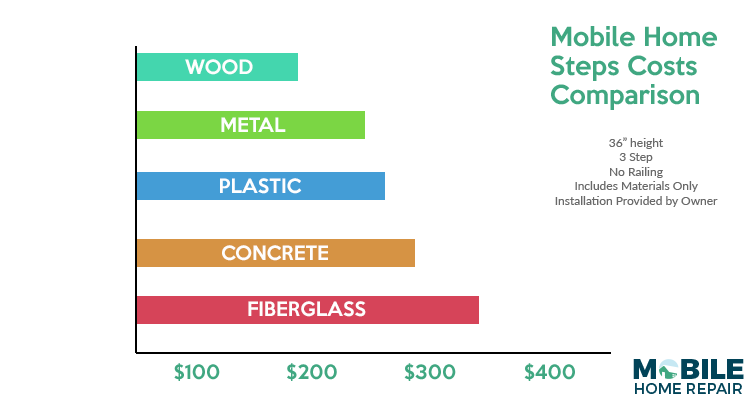
The cost of mobile home steps can vary widely. Factors such as height, width, building material, railing material, local code rules, and more all play a role in the cost of mobile home stairs. So, we figured the easiest way to showcase the price comparison was to look at the average price for a simple 3-step solution that has a height of 36” without a safety railing with all the different building materials.
Keep in mind that the information above includes the cost of materials only and assumes that you will be able to install the steps on your own. If you need to hire someone that will add to the expense. The cost average is just that, average, and may be lower or higher than what you find at the time you are price shopping. However, it should serve as a useful visual guide to the cost of the different materials.
What Fits Your Need: Build or Purchase?
For every mobile home, there is a different design for the steps. You will find hundreds of variations and ideas are available as you begin to search for the right option for you. At the end of the search, you will be faced with one of these options:
- Purchase Pre-Made Mobile Home Steps – A popular option for those who lack the tools, know-how, ambition, physical ability, or time to build their own stairs. In many cases purchasing pre-made mobile home steps can often be a way to save money when you incorporate the time and/or trial and error involved in most installations.
- Build Your Own Mobile Home Steps – For those that prefer to get their hands dirty and don’t mind a challenge, you can choose to build your own. Your building material choices are only limited by your access to equipment and experience. This is a popular option if you have an excess of time but a limited budget. Especially if you choose to build your mobile home stairs from wood.
Examples of Portable, Metal Frame, Pressure Treated Wood, and Fiberglass Stairs
Some of these examples feature handrails, others are wide, and others have smooth walking surfaces instead of grip. Please note that there is really no “basic type” when it comes to steps and stairs. The ideal option is the one that is safe (accessible), of high quality, fits your budget, and uses. We have always preferred to cover our entries to limit exposure to mother nature to make them long-lasting. But, that is usually another separate project that can be difficult in some cases.
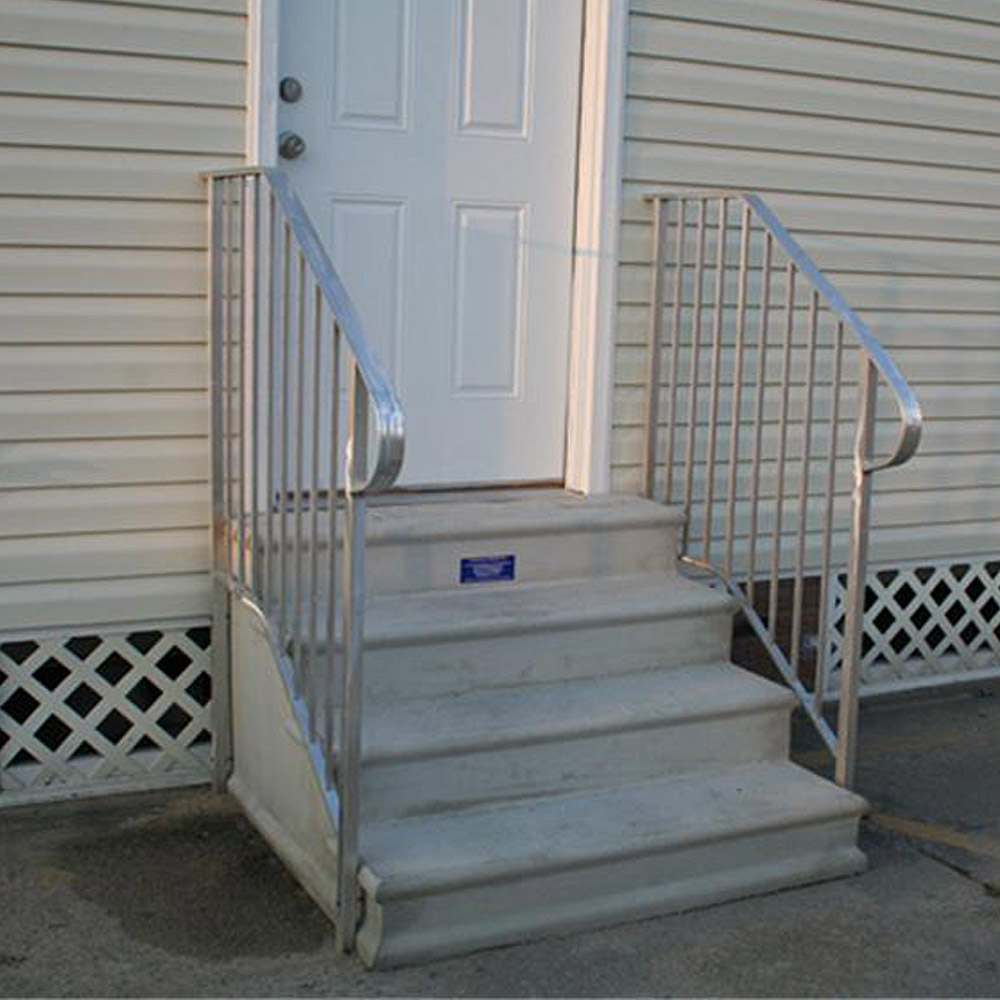
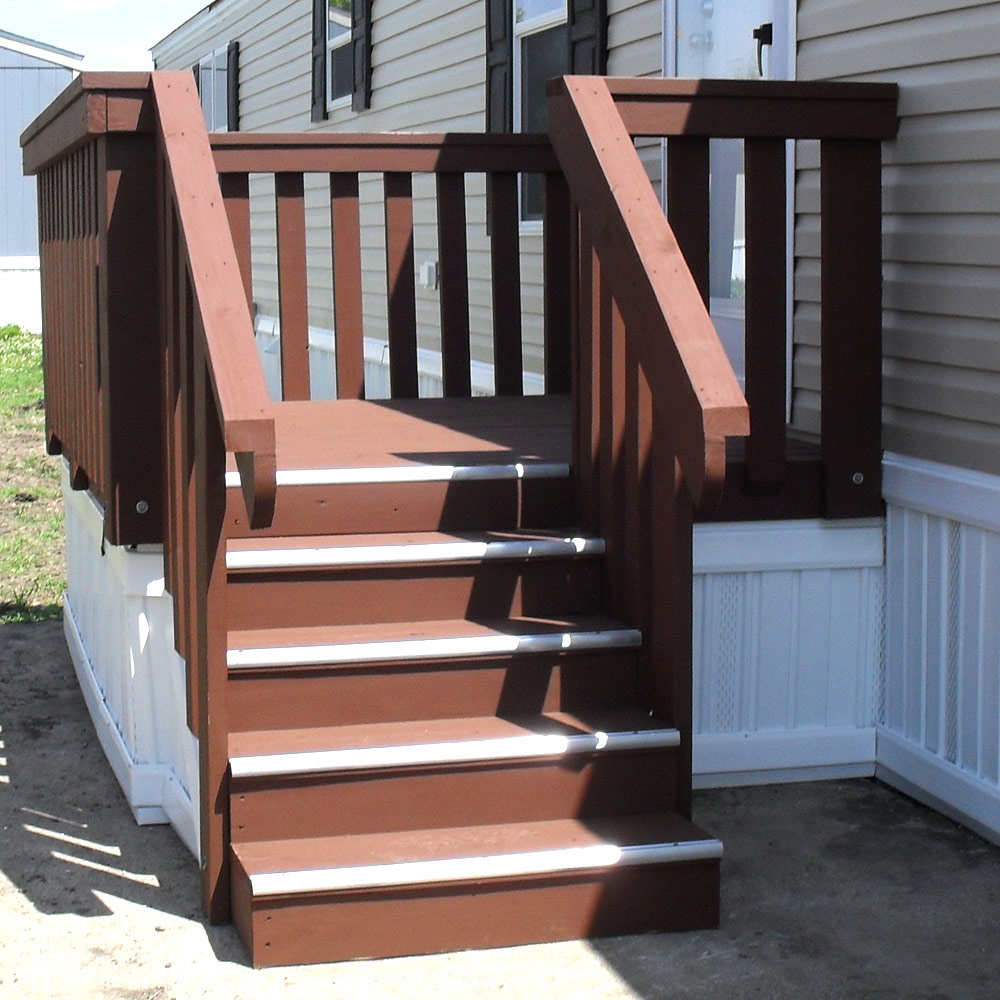
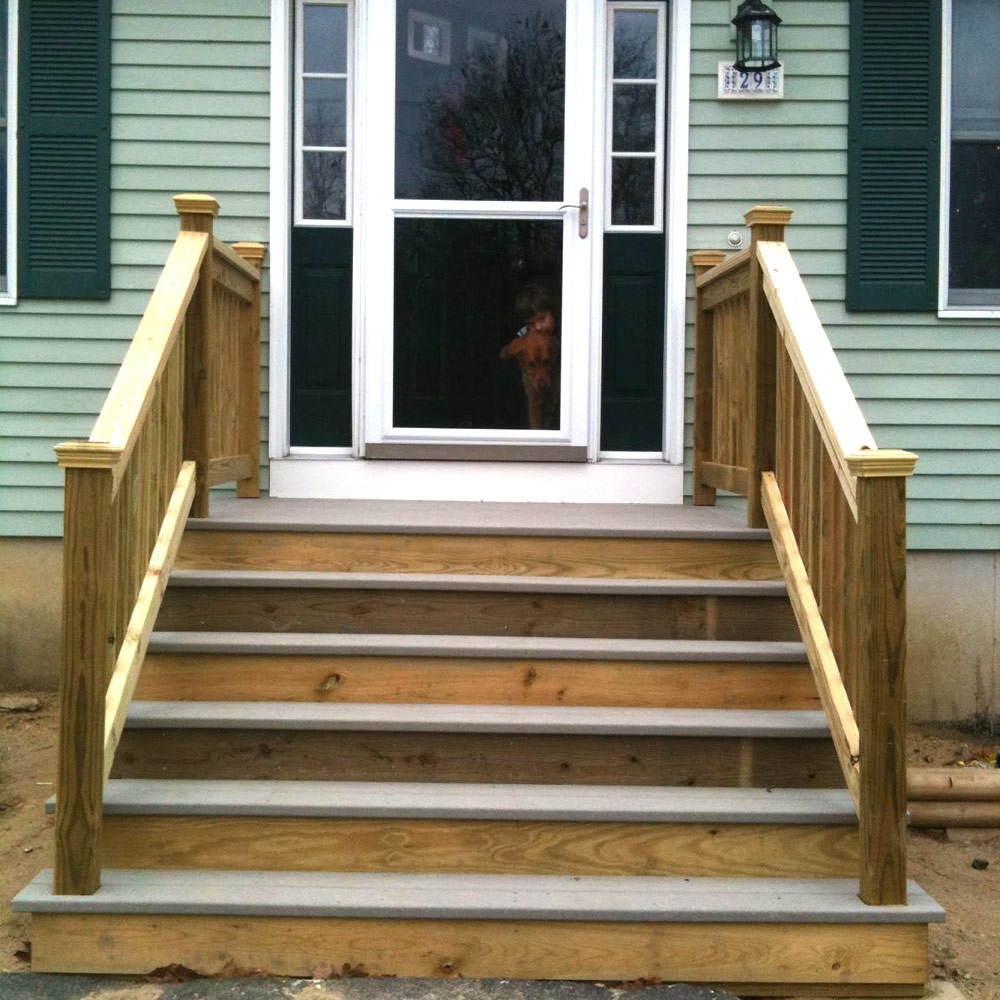
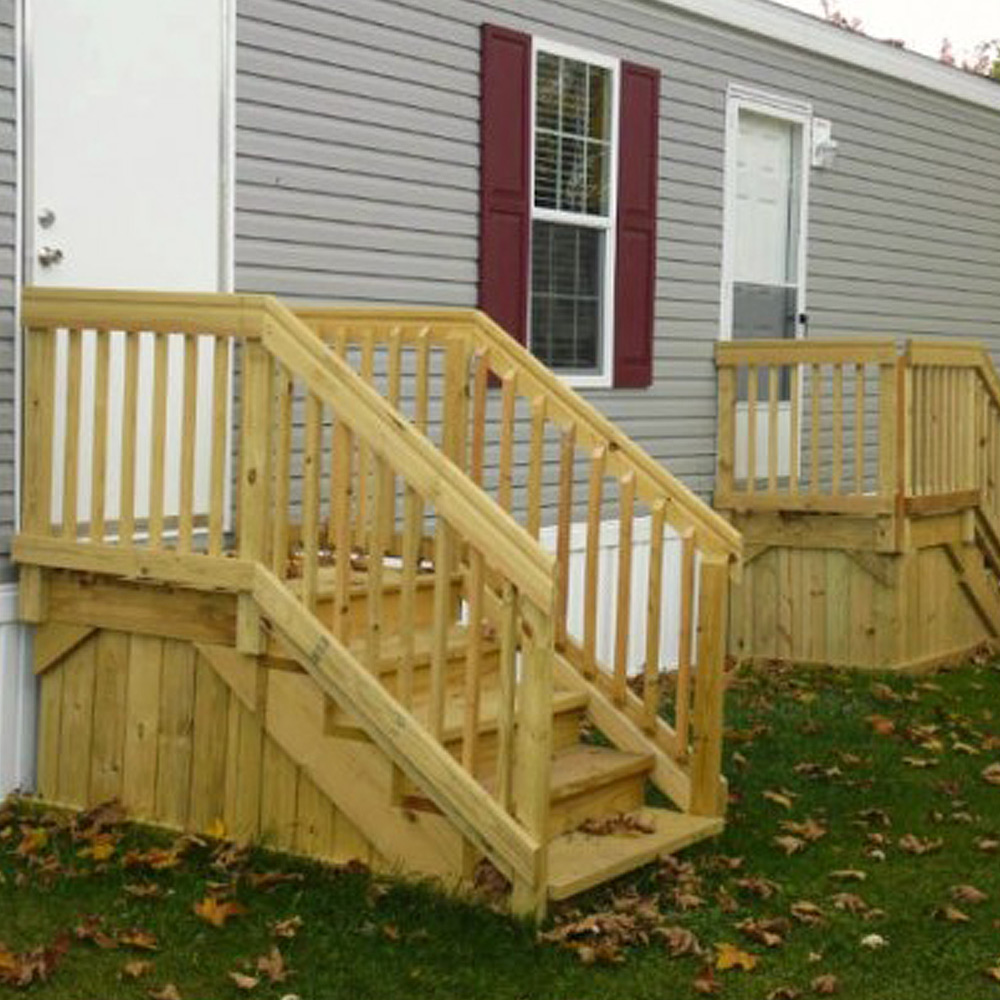

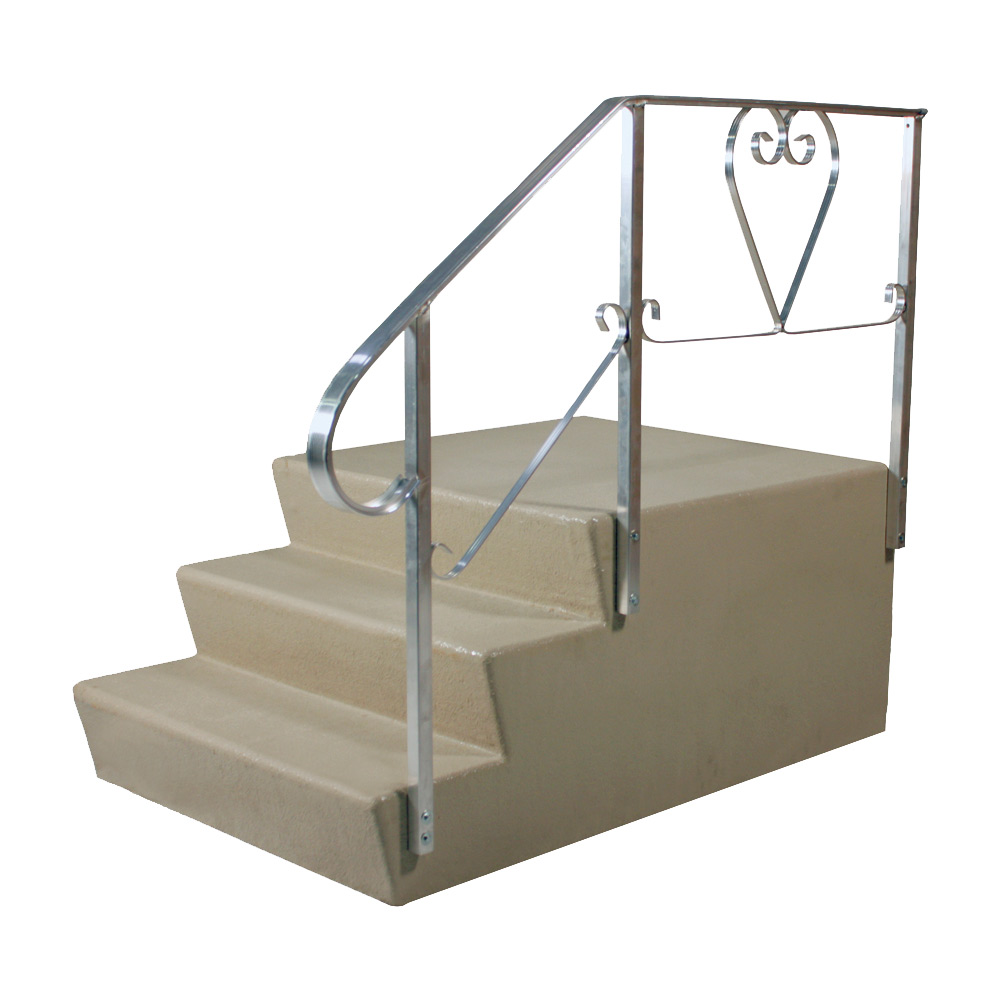
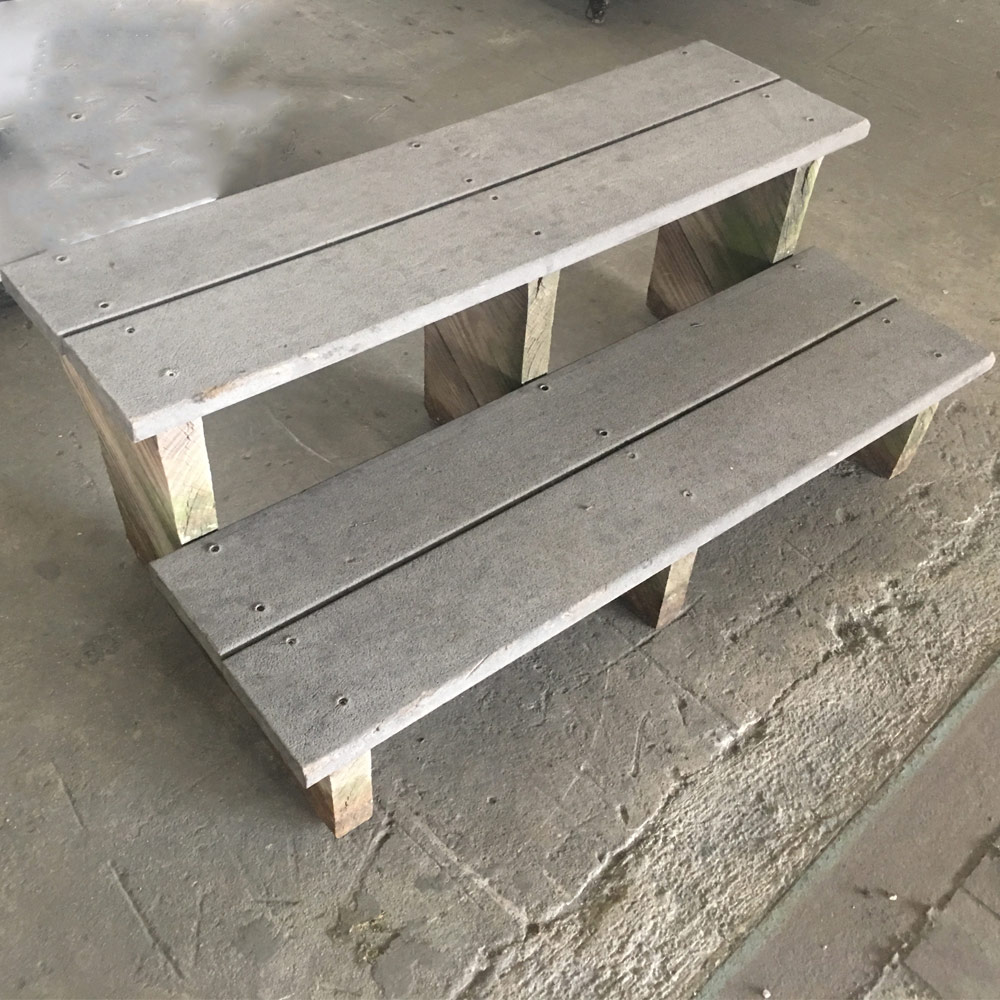
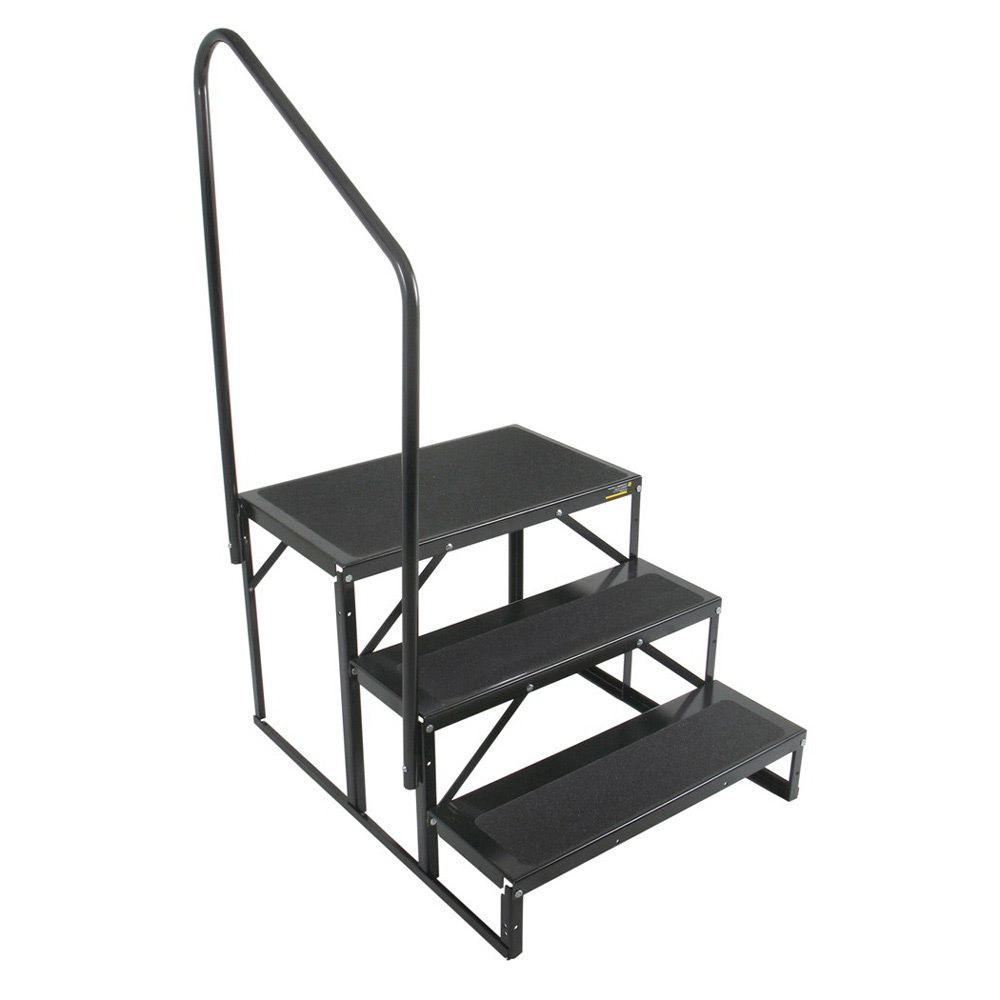
Make Your Own Mobile Home Steps
You know that buying online or in a store is easier, but you don’t have the budget or the interest in that. We get it and often feel the same. So, where do you start building your own? Well, you could hire a contractor or you could layout your plans and build them from scratch. Building stairs can be a challenge if you have never done it before. We would encourage you to follow a guide like the one found at Doityourself.com or DIYnetwork.com if you are new to it.
Tools needed for building your own stairs:
- Saw (a circular saw or mitre saw is best)
- Square (Large enough to lay out a stringer)
- Tape Measure
- Hammer (or Nail Gun if you are so lucky!)
- Galvanized Nails or Outdoor Screws (Screws preferred – will likely need 3-inch and 1.5-inch screws)
- Electric Drill
- Gravel, Pavers, or some other foundation material (concrete pad)
- String and Stakes
- Gloves and Eye Protection
If you find yourself wondering what one or more of these tools or supplies is, be very careful and consider asking someone who does for help!
Planning is 90% of the Job
Ever heard of measuring twice and cutting once? That same principle comes into play when planning the layout of your mobile home steps. There are several tools online that can help you measure, calculate and plan your stairs so that you don’t end up having to buy excess material because of a mistake.
- Decks.com – Deck Stairs Calculator
- MyCarpentry.com – Stair Calculator
- Calculator.net – Stair Calculator
- Decksgo.com – Stair Calculator
There are also mobile phone apps to help in real-time:
- Android – Fast Stairs Calculator
- Apple iOS – Deluxe Stair Calculator
The part that most people struggle with is cutting the stringer. If you are comfortable with carpentry but are concerned about laying out the stringer, consider buying a pre-cut stringer for your mobile home steps at your local Home Depot, Lowe’s, Menard’s, or local home improvement store.
Safety and Code Rules
It is essential that any stairs you purchase or build comply with all local building codes. Most local building departments make this information easily attainable. Failure to do so could put you, your family, your friends, and anyone who uses the stairs at risk. Also, you leave yourself open to a huge potential liability.
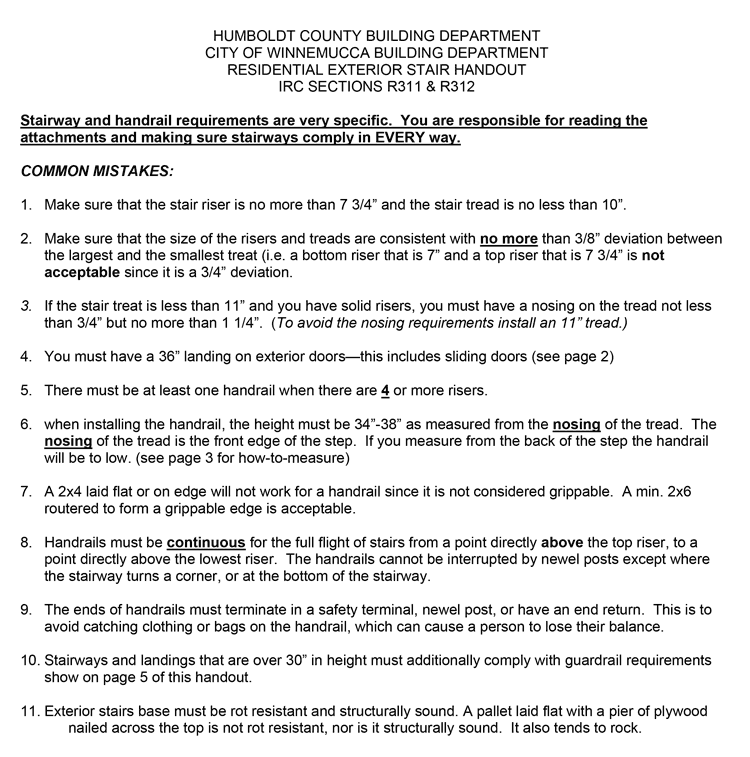
Above you will find a page from a handout provided regarding stairs and railings for residential use in a county in Nevada. You can read the entire document here (if that link is broken try here).
Further Information on Mobile Home Steps and Stairs
What we have provided here is a great introduction and overview to understanding the basics of stairs and steps for a manufactured home. But, there is much more to learn and we encourage you to continue your research.
- NRHA.org – Building Outdoor Stairs
- DeckMagazine.com – Building and Installing Deck Stairs
- Spokesman.com – How to build stairs that last
- Video – How to Make Stair Stringers

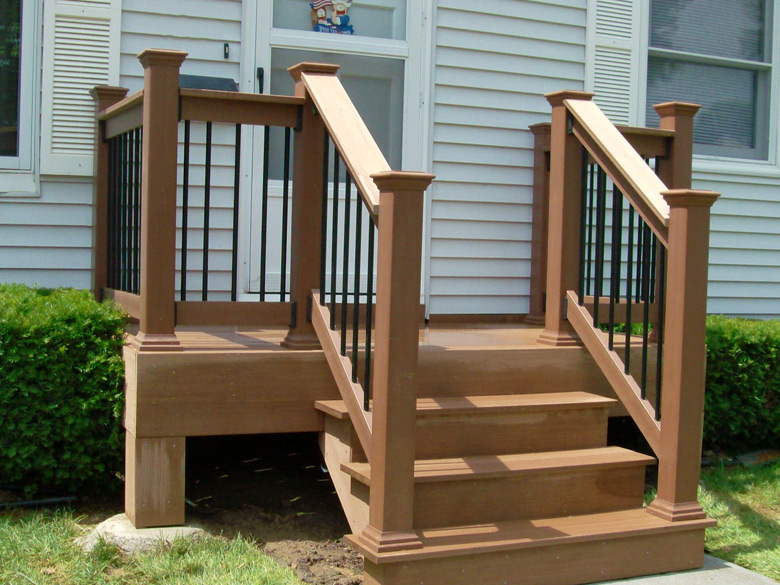
I absolutely love my mobile home steps! They may seem like a small addition, but they make all the difference in the world when it comes to safely accessing my home. I had a difficult time deciding between fiberglass, metal, wood, and concrete steps, but ultimately went with a wooden option. I love the natural look and it was easy to work with. Plus, with proper maintenance, it will last a long time.